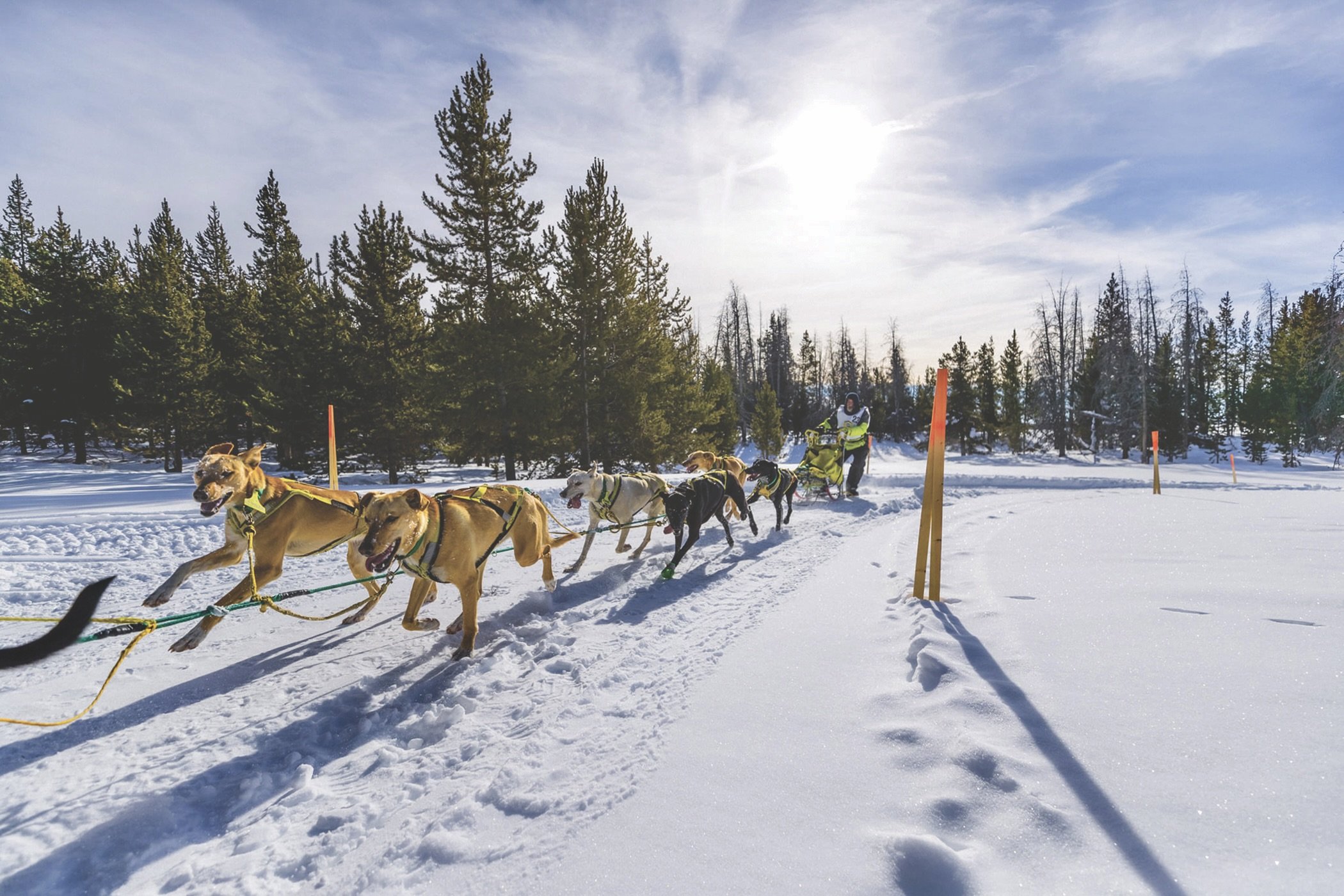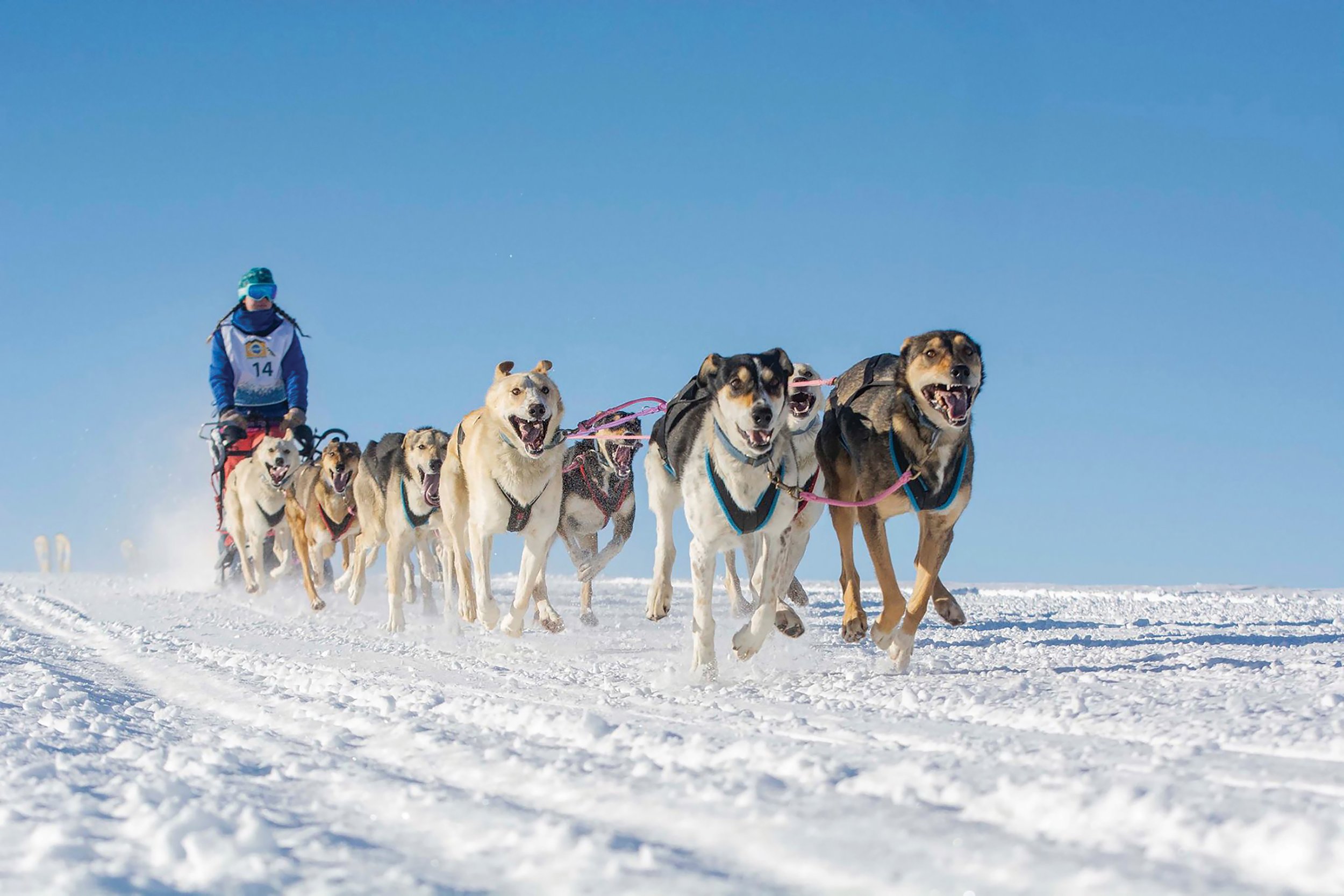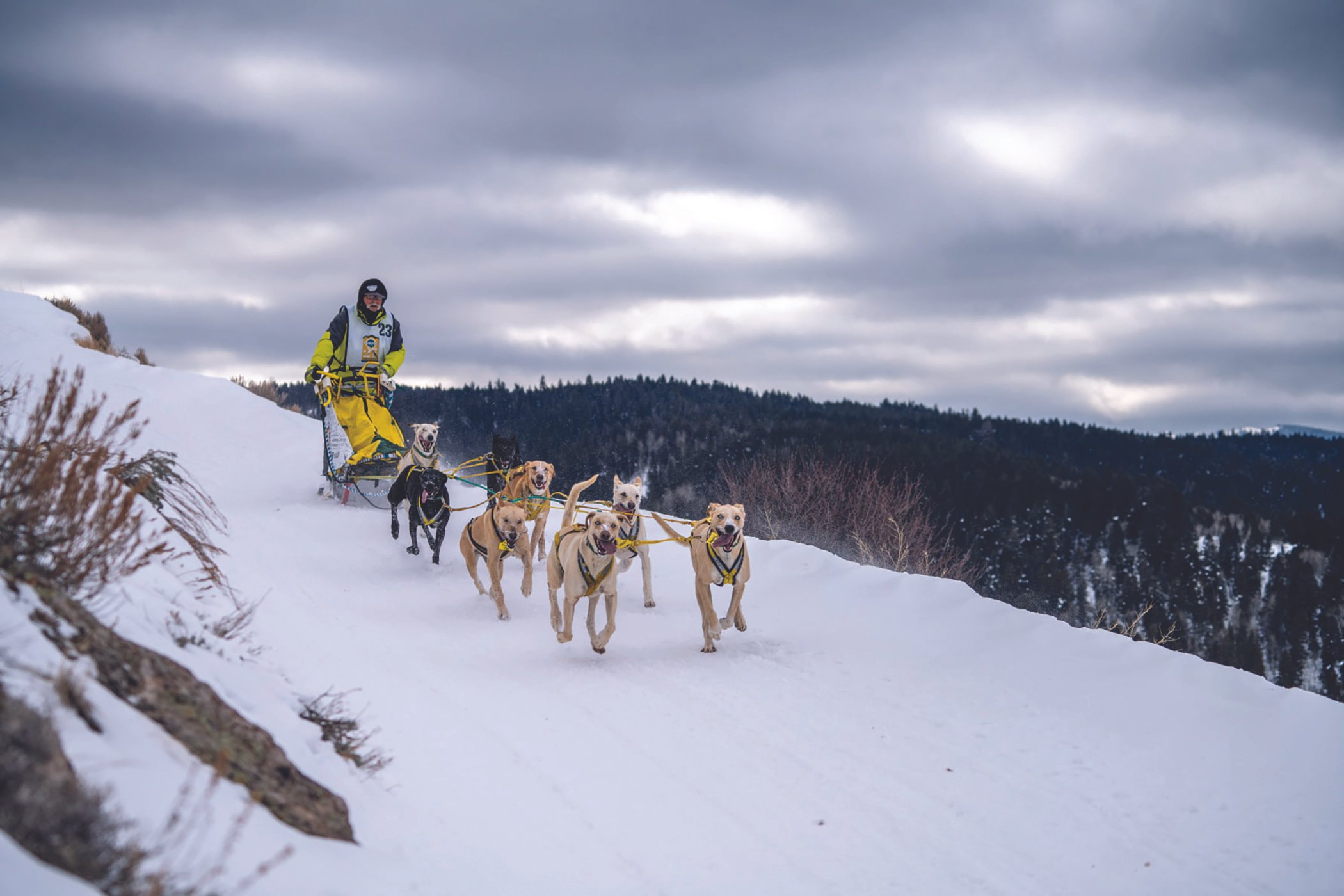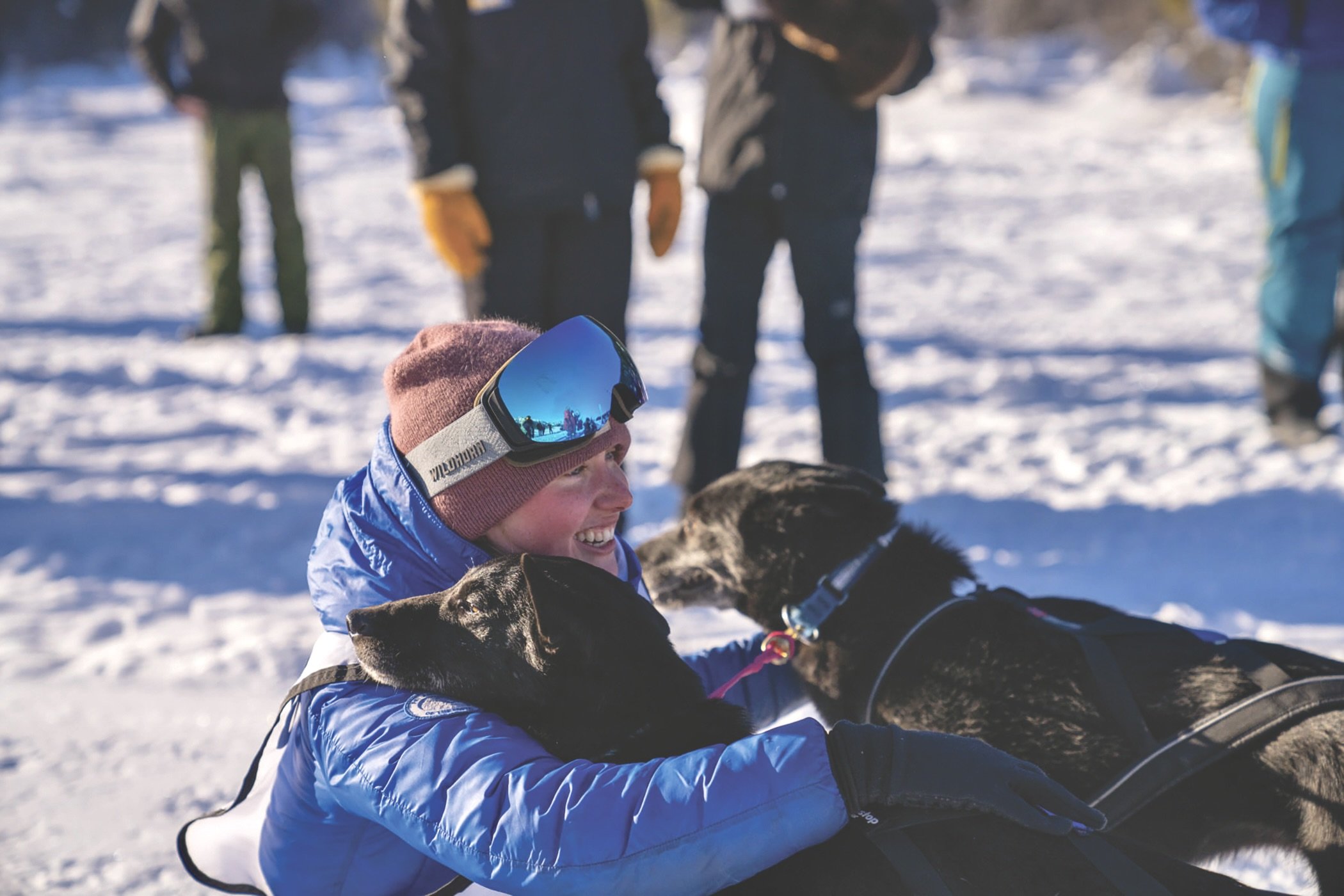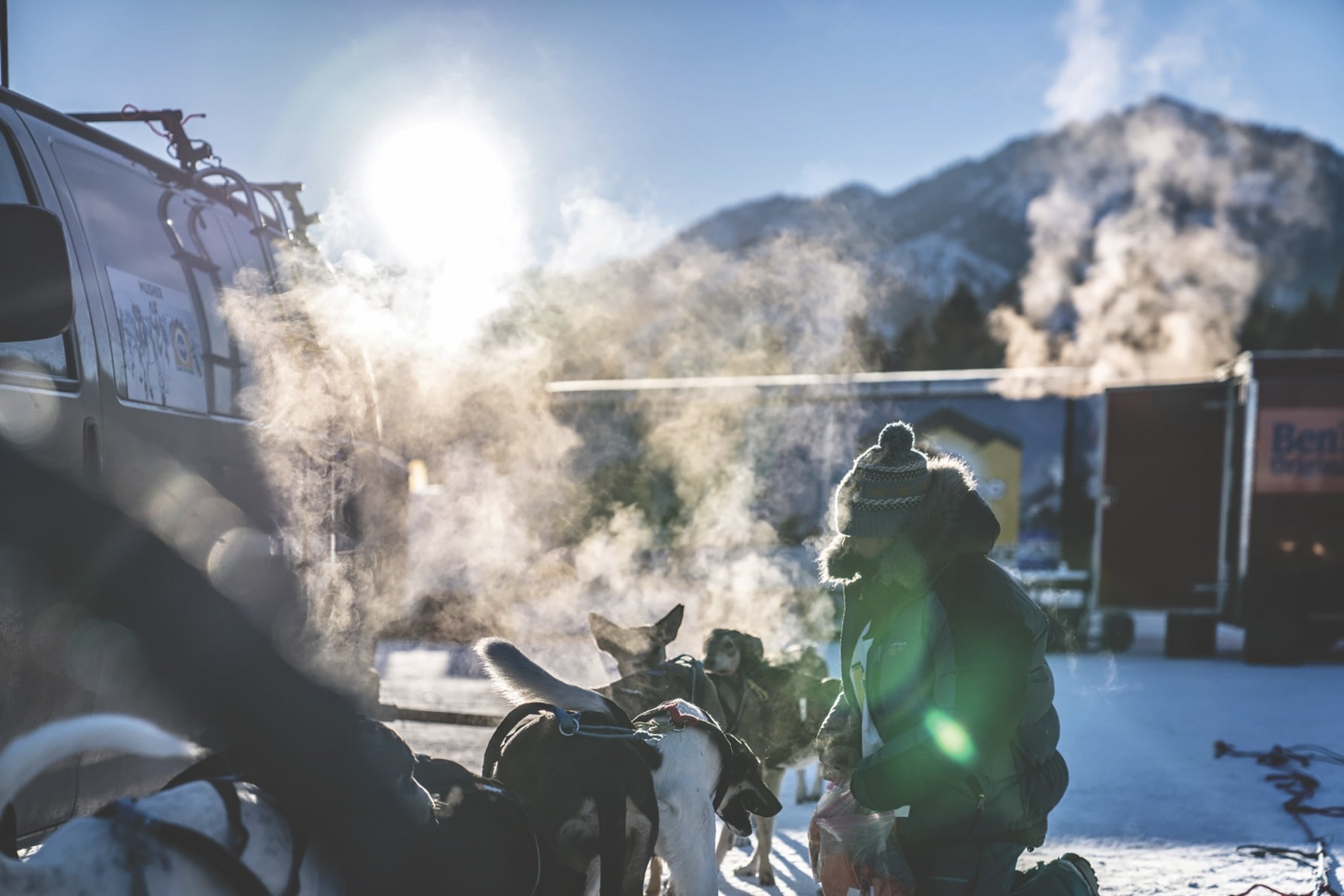The Bond Between Mushers, Sled Dogs, and Local Communities
The Pedigree Stage Stop Sled Dog Race
Across Wyoming & Idaho
Written by Melanie Limpus
Photography by Melanie Limpus and contributed by Wyoming Stage Stop
First published in Adventures in the West Magazine
A cold, early morning in the snow-covered mountains is awakened by the sounds of stomping paws; dogs howling, barking, wooing, and bellowing in the frigid temperatures. But the cold doesn’t bother the dogs. They’re happy. They’re excited. And they’re ready to run.
Spectators feel the excitement build as mushers unload sleds from the trailers and put their teams of dogs into position. Lining the sides of the track near the starting line, the crowd anxiously waits for the signal. The Pedigree Stage Stop Sled Dog Race is about to begin.
Similar to the Tour de France, competitors run a different trail each day for a total of seven race days. Mushers from all over the world gather to compete for the championship title and a $165,000 purse, which goes to the racer with the shortest accumulated time on all seven trails. The trails are 30 to 35-mile loops with the start and finish lines at the same location.
The race is very community oriented. Each stage is hosted by a different Wyoming town, as well as Driggs, Idaho. Starting in Teton County east of Moran, stages include Lander, Pinedale, Big Piney/Marbleton, Kemmerer, and Alpine, before ending in Driggs where the final banquet is held. Between stages, mushers and their dogs have the opportunity to meet and greet locals and spectators within each town.
“It’s a spectator's dream,” said Dan Carter, the Pedigree Stage Stop Sled Dog Race Director.
Dan started mushing in 1995 in northern Minnesota. He began as a sled dog tour guide and transitioned into racing. After ten years of full-time mushing, he retired as a competitor and has been the race director since 2014.
“Sled dogs are such incredible animals. They love to run, and they’re conditioned for it,” Dan said, “When it comes to racing, you want a dog that is a natural athlete, has speed and endurance, a good appetite, and preferably is capable of running in the lead position and taking commands.”
Traditionally, most racing sled dogs are Alaskan Huskies. More recently, sprint and mid-distance racers breed Pointer and Hound crosses into their Alaskan Husky lines to get more speed. The Alaskan Husky remains the top choice for distance racers as they are unsurpassed for their mental toughness and physical endurance.
The speed of a dog team varies depending on training, genetics, and trail conditions. Competitive teams can reach speeds from 16 to 20 miles per hour. A team of sled dogs consists of lead dogs, swing (or point) dogs, team dogs, and wheel dogs, each with a specific role in navigating the trails and terrain.
Lead dogs, like their name, are positioned at the front of the pack. The main job of the lead dog is to set the pace. They are known to be intelligent, alert and are capable of running very fast.
“The lead dog wants to be up there. They like to have that responsibility, and they’ve been well-trained to respond to voice commands,” said Dan.
Directly positioned behind them are the swing dogs. These dogs may also be capable of leading but are typically more nimble and help steer the team around corners.
Following are the team dogs. These are the core of the pack and maintain the pace. Depending on the size of the team, there can be several pairs of team dogs.
Wheel dogs are positioned at the very back, nearest to the sled. These dogs are usually the linebackers and help get the sled moving from a stop position. They are usually the most enthusiastic and love to pull. They’re often seen lunging into their harnesses ready to go.
“The adage that, ‘you’re only as fast as your slowest dog,’ is true,” Dan said chuckling.
But it’s not just about speed. Even though mushers are athletes in and of themselves, they are just as much a coach as they are players. Mushers pay very close attention to their dogs, and they go to great lengths to ensure their dogs are properly cared for. They train, feed and bond with them, and in return, the dogs learn to trust and listen.
According to the regulations, mushers may bring a pool of 16 dogs, but can only race a maximum of 12 at a time. In addition to hauling their sled, equipment, and team of dogs, mushers also bring along food and built-in housing for the dogs. Flatbed trailers and modified horse trailers equipped with kennels are typically used to house the teams of dogs.
“It’s actually pretty comfortable living,” Dan said, “A lot of these mushers compete in other races all over North America, and some of them are on the road for months at a time.”
The average sled dog burns 10,000 calories a day while on the trail, so it’s imperative that the mushers haul their own food to keep the dogs’ diets consistent, balanced and highly nutritious without changing what they are accustomed to eating. That equates to hundreds of pounds of dog food, especially when competing in back-to-back races. Each musher creates their own special formula, from warm broths before the race to a high-energy kibble combined with various meats and supplements upon return, and always plenty of fresh water.
Verbal commands are up to individual mushers. The most common commands are “Gee,” meaning right turn, “Haw,” meaning left turn, and “Woah,” meaning stop. Other common commands to get the team moving include “Hike,” “Alright,” and “Mush,” as well as giving the sled a little nudge, indicating it’s time to get moving.
“The key with commands is consistency. Tone of voice and inflection can mean a lot,” said Dan.
“Sled dogs are such incredible animals. They love to run, and they’re conditioned for it. When it comes to racing, you want a dog that is a natural athlete, has speed and endurance, a good appetite, and preferably is capable of running in the lead position and taking commands.”
The dogs feed off of mushers’ energy. If it’s a fast-paced run, mushers will likely give commands in a more excited tone and the dogs respond by increasing speed. If it’s more of a leisurely pace or a tedious trail, mushers use a calmer tone to keep the slower pace or to maintain focus. Sled dogs also tend to mimic emotions, and mushers often modify their interactions, both verbally and physically, based on how they want the dogs to behave.
“The dogs even pay attention to how their mushers walk and move,” Dan said, “It all comes down to trust.”
Dog sledding was one of the first instances of humans and dogs working together, and the Pedigree Stage Stop Sled Dog Race was an amazing illustration of that bond. At each meet and greet held after every community race, the public was invited to attend to meet the mushers and dogs.
Despite worry about the lack of snow that has plagued the sled dog race region and caused the cancellation of races in Montana and Idaho, Wyoming blessed the Pedigree Stage Stop race with plenty. The 2024 race was from January 27 to February 3, when the ceremonial start kicked off in Jackson Hole on January 26.
The mushers and their dogs arrived in Lander, to a supportive community that had blocked off two city blocks to allow the mingling of the mushers, dogs and the public. A boisterous gathering proved that dog sledding is popular, well-received and promises to be around for years to come.
Follow Adventures in the West Magazine on Facebook and Instagram and watch for their website www.adventuresinthewest.com coming soon.

